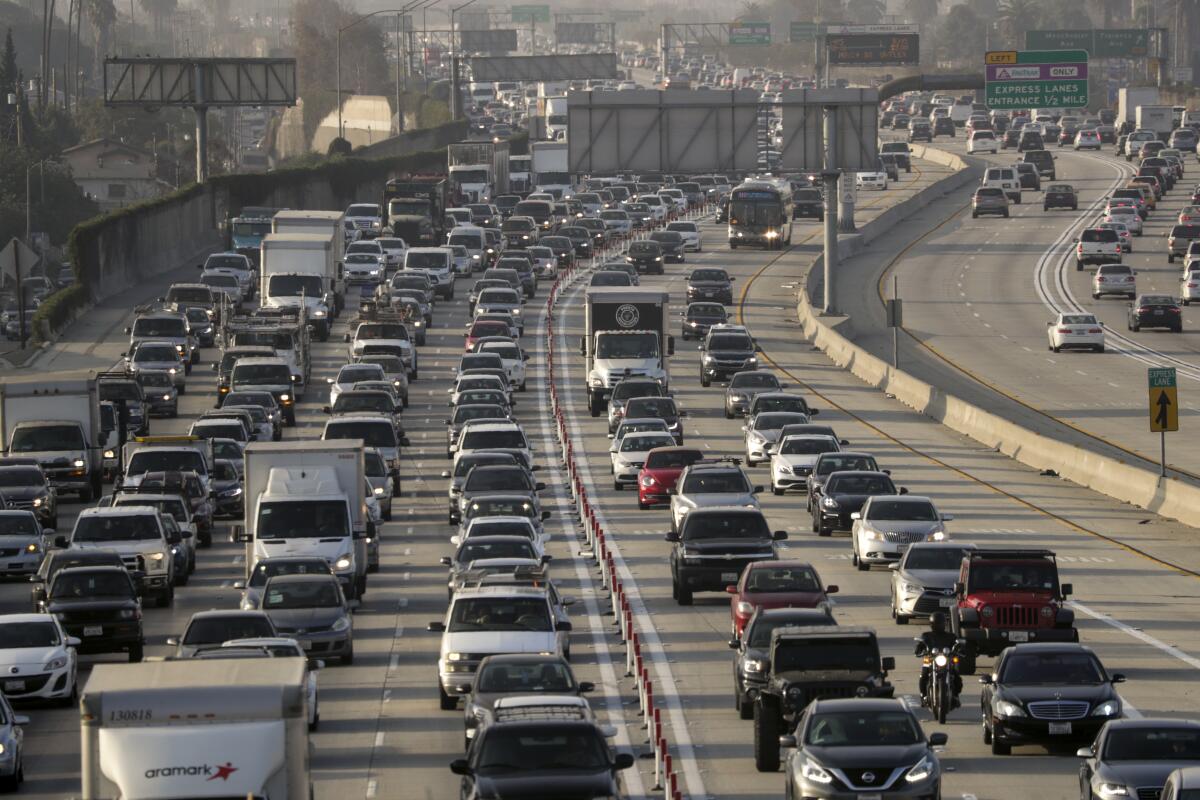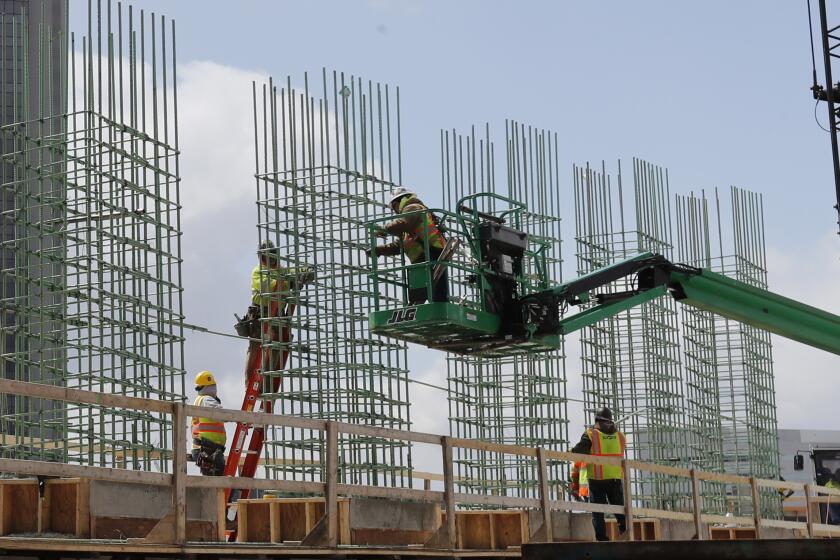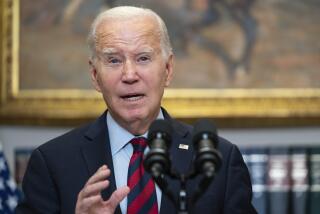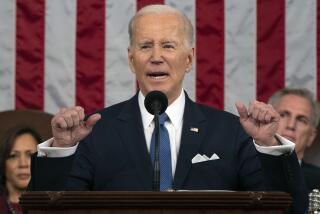Column: Bidenâs plan to upgrade almost everything is worth every trillion

The Infrastructure Week debacle debuted with a military parade on June 5, 2017, when the then-president â the one President Biden now calls âthe former guyâ â took to the Rose Garden podium. In theory, he was to deliver rousing oratory on roads and bridges. In fact, he went into a tailspin about collusion, obstruction and the whistleblowing FBI director he had recently fired, James Comey.
A resilient punchline was born: âInfrastructure Week,â reupped again and again without payoff, came to mean that a promising bipartisan policy initiative for national repair and construction was bound to fizzle.
Which is why Americans can be forgiven for a dash of skepticism about whatâs shaping up to be an Infrastructure Administration. On Wednesday, Biden revealed the American Jobs Plan, which comes with a near-gut renovation of American groundwork. What dâyou know â there was no mention of Comey.
Instead, Biden pulled back the curtain on an eye-popping proposal for a total outlay of 2 trillion smackers. This comes on the heels of the American Rescue Plan, which addressed the immediate health and economic needs of a nation in distress. While Trumpâs kickoff 2017 plan featured little more than a lonely push to privatize air-traffic control, Bidenâs ambitions are almost mind-boggling in scope.
Among other things, the plan would modernize American transportation including 20,000 miles of highways, roads and main streets; the 10 neediest big bridges in the country; and 10,000 smaller bridges. This transportation component alone comes to $621 billion.
(For comparison: Building the whole interstate highway system from scratch, which preoccupied the federal government for most of the 20th century, cost the government $114 billion. Thatâs $222 billion in todayâs dollars.)
The bill also allots $137 billion for public schools, early learning and community colleges, and another $100 billion to improve power lines, which would get the U.S. on the road to decarbonization. Train fans, like âAmtrak Joeâ himself, are cheering for the $80 billion in the plan for repairing and expanding passenger and freight rail.
It goes on: $400 billion for care of the elderly and vital support for caregivers, $213 billion for affordable housing, $100 billion for workforce development.
The need for infrastructure improvements has only gotten more dire in the last four years, and there is widespread â more than widespread, near-universal, red and blue â public support for improvements. So, should be smooth sailing, right?
Wrong. As usual, the bottleneck is a gear-grinding debate about the budget. Shopworn Reagan-era jargon is back in circulation, including âsupply sideâ and âtax-and-spend.â
The amibition isnât in the size of the plan, at $2 trillion over 10 years. Itâs in the scale and breadth.
Most Republicans â and some moderate Democrats, especially those from rich states like Reps. Josh Gottheimer of New Jersey and Tom Suozzi of New York â are demanding that the bill include, say it with me, tax cuts for the wealthy.
Meanwhile, Democrats, including moderates in the Senate from less affluent states such as Joe Manchin (D-W.V.), propose to pay for the infrastructure plan by repealing the former guyâs tax breaks for multinationals and fat cats.
As for voters, according to a Politico/Morning Consult poll released Wednesday, 54% agree with the Dems: Fund the bill by increasing taxes on corporations and those making over $400,000 a year.
This debate grinds on because it reflects the never-ending pursuit of something that sounds good: a balanced budget.
Thatâs too bad because a balanced budget is now regarded by most economists as a foolâs errand. Experts in the dismal science, including Treasury Secretary Janet L. Yellen, have been coming around to the idea that inflation and deficit spending â the bugbears of the balanced-budget crowd â pose less of a threat to the economy than once supposed. In this view, the greater danger is joblessness, homelessness and hunger, which directly sap the capacity of people to stay healthy, earn a living, raise families, build wealth, pay taxes and improve the collective welfare.
But at least, if the budget skirmish isnât cooling off, neither is the zeal for mongo infrastructure rebuilding.
In October, an Ipsos Global Advisor survey found that 8 in 10 Americans believe investing in infrastructure would stimulate the economy and is vital for future growth.
On Wednesday, AFL-CIO President Richard Trumka issued a statement: Bidenâs plan âbrings us one step closer to delivering the aggressive changes we need to rebuild our country.â
The stock market soared on news of the new planâs unveiling, and the S&P 500 hit an all-time high.
When the public, unions and the stock market are all sounding sunny, maybe itâs time for some cautious optimism â and ideally some velocity.
After all, it should not be lost in all this that American infrastructure really is in trouble, and as huge as $2 trillion sounds, it isnât a bad estimate, especially when you consider that deferred maintenance runs up repair bills and spending now saves later.
The American Society of Civil Engineers gave the nationâs overall infrastructure a grade of C-minus in its 2021 report card. Here are two striking details on the ASCE report card: Forty percent of American roads are now in poor or mediocre condition, and government failures to rehabilitate the road system costs individual motorists $1,000 a year in repairs and operating costs.
Lemme try my hand at a new Washington slogan, suitable for lamination: Infrastructure is not a punchline, itâs a lifeline. Or, no, how about this? Politicians need to stop their power trips so we can start our road trips.
@page88
More to Read
A cure for the common opinion
Get thought-provoking perspectives with our weekly newsletter.
You may occasionally receive promotional content from the Los Angeles Times.











